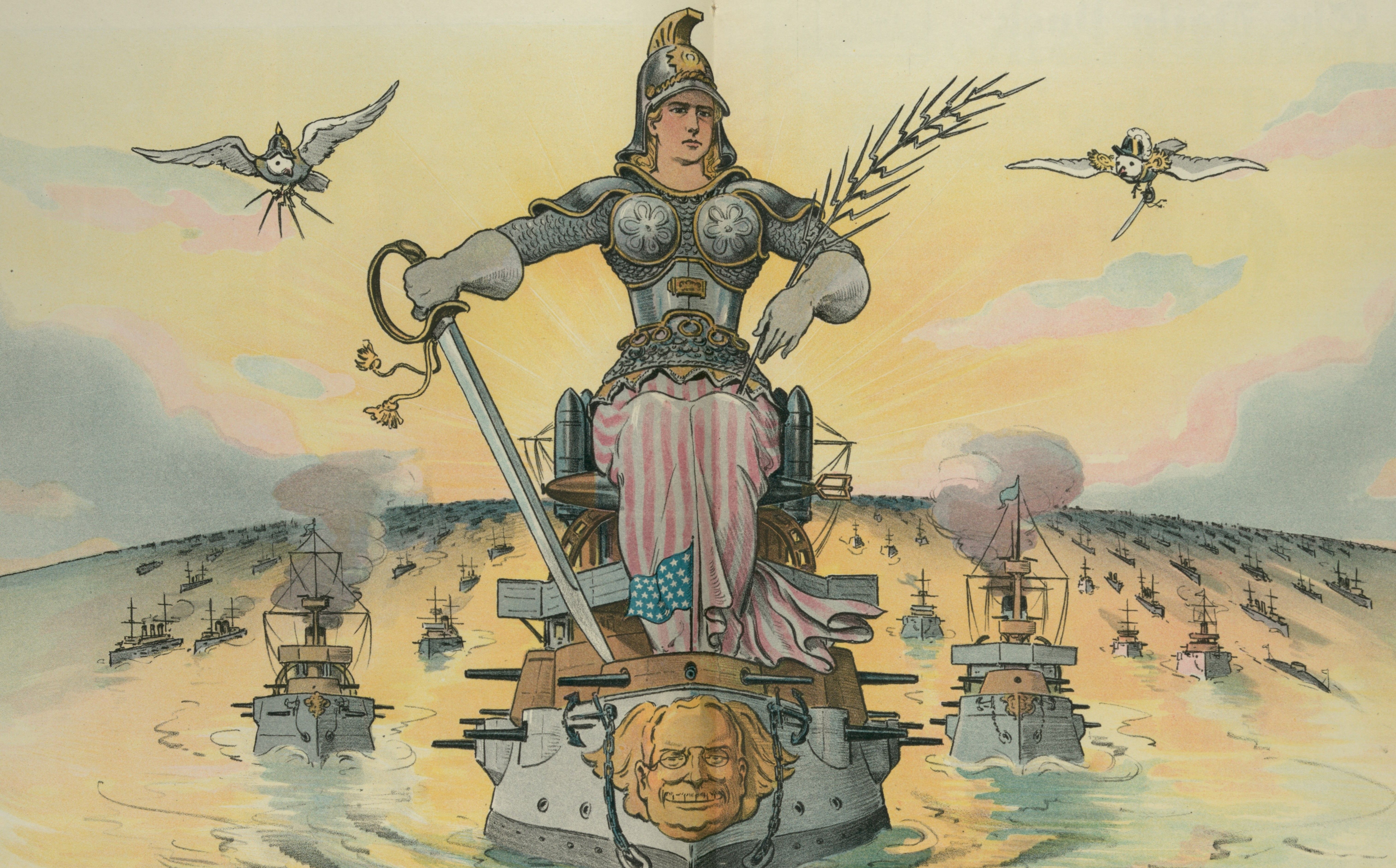“A Navy Second to None” has been the most enduring consensus in American national defense. For more than a century, the American people and their elected leaders — Restrainers and Warhawks alike — have agreed that the U.S. Navy is, and must remain, “The Shield of the Republic.”
Yet today the Navy is in trouble. The Navy and its boosters in Congress want us to believe the problem is all about too few ships and too few facilities.
In fact, the rot runs much deeper. Americans can see that something is wrong, especially when it is staring them in the face: Navy “bureaus” that cannot design ships, builders that cannot build, shipyards that cannot repair, depots running out of munitions, command failures and corruption, accidents at sea, and billion-dollar fires in port.
The disorder is in fact positioned in the heart of the Navy Ethos itself. The precise term-of-art — “Navy Ethos” — was first introduced in 1980, here. It signifies the core, or essence of the Navy’s sense of self: Its codification of meaning, belonging, and identity — as a society and culture.
Hence, the real story of the Navy’s roads to ruin lies in the unraveling of the Navy’s own Ethos.
Yet how to show this? The Navy's five big, and indeed, existential problems can be best showcased by highlighting the struggles of five other navies in history that were forced to confront all-or-nothing cultural crises in their own “Navy Ethos.”
The wrong war
No matter what they say, armed forces prepare for the war they want to fight. Before Pearl Harbor, the United States and Imperial Japanese navies built mirrored fleets centered around lines of battleships that would someday meet in mortal combat, which in the space of a single event — a Pacific Clash of Titans — would decide the destiny of nations.
Yet when war came, the efforts of both fleets, try as they might, could not make this happen. Alfred Thayer Mahan’s prophecy of “Seapower” mesmerized the U.S. and Japanese navies with the mutual conviction that a Pacific War could be decided by a single event: Another Tsushima or Trafalgar. Yet even if there were no way to achieve such a choreographed final fantasy, the idée fixe of decisive battle had become a way of life for both USN and IJN. This obsession with almighty battleships locked in a last battle led to the destruction of America’s prewar fleet in the first year of war, and then eventually, Japan’s.
Today, the Navy still pines for a Pacific fleet showdown, this time with China. It is still obsessing over its capital ship idée fixe (with carriers in place of battleships) — when, like 1941, its fleet is simply too small, too old, and too out of shape.
The wrong stuff
In World War II, the U.S. Navy was saved only by America’s titanic industrial power, which in 1941 was building two backup fleets: A "two ocean" armada, to be followed by and an even bigger one. That second force, 5000+ ships, was built de novo — as though out of nothing — in just four years. The Navy was saved, not by its adaptable resilience, but by American Captains of Industry.
In tragic contrast, the Imperial Japanese Navy — the most powerful fleet in the world in 1941 — had no backup. When faced with a U.S. shipbuilding monster, it was literally ground down by those 5,000 brand spanking new American hulls. In this sense, the Nihon Kaigun is very much like the U.S. Navy today. War came, and it simply could not replace ships lost.
Frankly, the Japanese actually built quite a few new ships during the war — just not enough. Likewise, there are no Captains of Industry to save the U.S. Navy today. China has 200 times the shipbuilding capacity of the United States, and fabulous repair and maintenance that serves the entire maritime world. If America cannot build, repair, and maintain even its current, “incredibly shrinking” Navy, then it is no “maritime nation.”
The wrong rule
What happens to the Navy that reaches the acme of power and success, and comes to believe that it will command the seas forever? That would be Great Britain from 1815-1914. For the Royal Navy, it meant atrophy, that invisible sclerosis hardening into an ossified way of life.
As it celebrates its always-triumphant orthodoxies, it also forgets how to think, it takes itself way too seriously, and it believes without a flicker of doubt that, to stay on top, the Fleet simply must keep doing what it has always done, in sufficient quantity and quality, of course. The Royal Navy may have survived on the basis of quantity and quality of ships.
Yet what about quality and originality of thought? A Navy Ethos that punishes new thinking, that throttles innovation, that cashiers criticism — all by the time proclaiming how it celebrates these things — is an ethos chained to its own “Rules of the Game.”
In this sort of culture, only the right people, who say the right things, and put on the right, bright face to the public can expect to move up. This is the sclerosis of success, and it is, for any society of war, the most dangerous disorder: For it cannot be cured from within. Thus, the strategic reckoning of the Royal Navy in World War I will be as nothing to what awaits its American Cousin, very soon.
The wrong team
To know the U.S. Navy’s rot at its deepest means pulling back the curtain on a seemingly unlikely historical antecedent: Namely, the ruinous inner-working of Medieval and Early Modern Muslim empires.
This is the dynamic of the "slave dynasties." Corps of "Mamluks" or "Ghilman" ("enslaved soldiers") came to rule both Arab kingdoms and Caliphate. This aggressive artifact, burrowing deep into the heart of Muslim empire, reached its peak at the Ottoman Empire’s very height, where the business of the Sultan and his Sublime Porte became the business of its Janissary Corps.
This is what happens when servants become masters. Today, the business of the Navy is the business of its prime defense contractors, which have effectively taken over their titular overlords — the old bureaus — in the Department of the Navy. Today, the ideal cursus honorum, or life passage, for a naval officer is no longer to “make flag” and command a carrier strike group, but rather to realize one’s true destiny after retirement, with a seven-figure berth at one of the Big Five.
Lockheed Martin, Northrop Grumman, General Dynamics, RTX (formerly Raytheon), Boeing, and a few others do good work (of course), yet it is they who now define the Navy's course. Their splashy ads proclaim their loyal service, everywhere, and which also — subtly yet undeniably — proclaim that it is they who truly rule.
The wrong fate
In 1781, in the American War, the French Marine Royale was literally "Peak France" at sea. Arguably, the Bourbon Coalitions’ navies won the war. Never before or since would the French Fleet be the instrument of such historic transformation as it achieved with this “world-historical” event. Yet, however triumphant, the war had dire consequences for the victor. France quickly unraveled into bankruptcy and revolution. Political calamity cascaded into a downstream disaster for the French Navy.
The U.S. Navy — which clearly does not represent "Peak America" at sea — cannot begin to be compared to the fleet that sealed the fate of Britain’s American empire and ensured U.S. independence. Yet as surely as for the Ancien Régime of 1789, a crisis in the American constitutional order would hit the U.S. Navy hard. It would feel the savage bite of American domestic strife, as well as the crippling burden of national debt working its way into the heart of national defense. A diminished nation will also mean an even more diminished Navy.
****
The bottom line is clear: Crises faced by others in history pale in comparison to the multiple vectors of failure facing the U.S. Navy today. Yet there are still hopeful guidelines the Navy might follow to hold ruin at bay: 1) Stay out of war for at least a generation, 2) Do what you can to leverage the State to create a real merchant navy and shipbuilding base, 3) Throw off the Old Religion. Let the Prophet go, and for a few years, simply observe the world as it is, and 4) Immediately consult a physician who can diagnose your sclerosis and tell you hard truths.
















